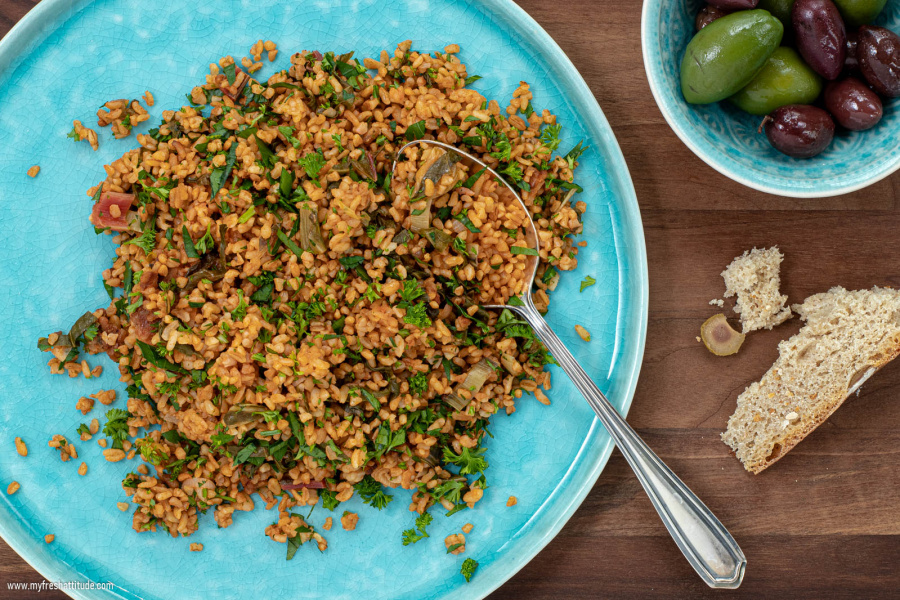
Bulgur Pilaf with Swiss Chard
I don’t recall where I picked up the original recipe for bulgur pilaf. I suspect it came from one of the many Paula Wolfert cookbooks that grace my bookshelf. In fact, I probably I stumbled across her lively description of cooking bulgur somewhere in Turkey while lying in bed and slowly drifting off to sleep – a restful sleep filled with fantasies of re-visiting Turkey someday to search out the perfect pilaf.
And then it happened…and I quickly realized bulgur is the Eastern Mediterranean equivalent to Italian pasta – just like Paula Wolfert once described, “…bulgur can do
Subscription Required For This Content
I don’t recall where I picked up the original recipe for bulgur pilaf. I suspect it came from one of the many Paula Wolfert cookbooks that grace my bookshelf. In fact, I probably I stumbled across her lively description of cooking bulgur somewhere in Turkey while lying in bed and slowly drifting off to sleep – a restful sleep filled with fantasies of re-visiting Turkey someday to search out the perfect pilaf.
And then it happened…and I quickly realized bulgur is the Eastern Mediterranean equivalent to Italian pasta – just like Paula Wolfert once described, “…bulgur can do almost anything. It’s graininess, earthiness, and very humbleness enable it to be pushed in numerous directions from soups to desserts.” And as I walked the streets of Istanbul eager to investigate every eating establishment I encountered, I noticed bulgur in everything!
Although bulgur can be made using many different cooking methods, the basic pilaf method is simply outstanding for medium-grain bulgur – the kind that is most often sold in supermarkets these days.
I like to flavor mine with onions, tomatoes, fiery spices and lots of chopped parsley. Depending on my mood and what I have laying around, I also enjoy adding other vegetables to the pilaf – most often Swiss chard as I have done in this basic recipe.
Feel free to experiment and add your own touch – roasted eggplant, winter spinach, kale, etc. are all good options. But the most important is to first master the basic pilaf method.
Yield: makes about 4-6 servings